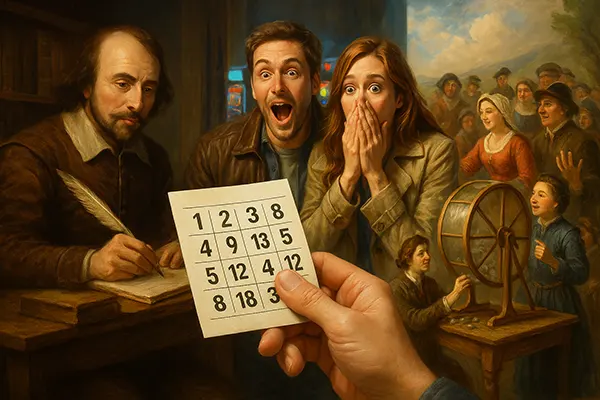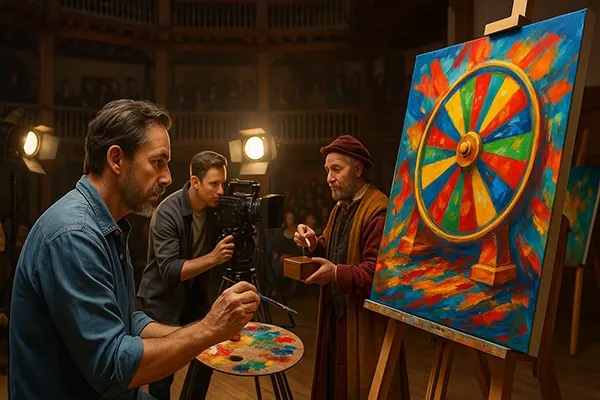
Lotteries in Culture and Art: From Shakespeare to Hollywood
Lotteries have long been more than a mechanism of chance or a way to raise funds. Across centuries, they have been portrayed in literature, theatre, cinema, and painting as symbols of fate, human desire, and the unpredictability of life. From Shakespeare’s nuanced references to modern-day Hollywood thrillers, the idea of winning or losing through a lottery often changes the course of characters’ destinies and reflects society’s fascination with luck and risk.
Lotteries in Classical Literature
Writers from the early modern period understood the dramatic power of chance. William Shakespeare, for example, used metaphors of lotteries and drawing lots in plays such as “The Merchant of Venice”, where the casket test mirrors the uncertainty of lotteries and highlights the themes of destiny and choice. Such references underline how deeply the lottery concept resonated with audiences of his time.
In the 18th and 19th centuries, novels frequently used lotteries as devices to explore morality and human ambition. They often represented the tension between wealth gained through fortune versus hard work. Authors employed lottery outcomes to comment on society’s obsession with sudden prosperity and the ethical dilemmas it created.
Literature across Europe often featured the lottery ticket as a simple object with profound consequences. Whether symbolising hope, greed, or tragic downfall, its presence added depth to storytelling, allowing readers to question the role of fate in human life.
Symbolism of Lottery in Storytelling
The lottery has consistently acted as a metaphor for life’s unpredictability. In storytelling, it rarely appears as a neutral event; rather, it carries weight, shaping the destiny of characters. Writers employed it to explore human emotions such as envy, anticipation, and despair, all triggered by the prospect of sudden change.
This symbolism often extended to moral lessons. Winning was not always portrayed as positive—sometimes it brought ruin or revealed hidden flaws, suggesting that fortune alone does not guarantee happiness. Conversely, losing could deliver wisdom or strengthen personal resolve.
Thus, the lottery functioned as a dramatic catalyst, helping authors examine broader human questions about luck, justice, and personal responsibility.
Lotteries on the Big Screen
In cinema, lotteries have provided compelling plots and character arcs. Films like “It Could Happen to You” (1994), where a police officer shares his lottery ticket with a waitress, illustrate how chance intertwines with themes of generosity and morality. The movie used the lottery as more than just a prize; it became a vehicle to examine kindness, trust, and societal values.
Hollywood has often portrayed the darker side of lotteries as well. Thrillers and dramas frequently show how sudden wealth can lead to betrayal, corruption, or downfall. The unpredictability of chance makes it a perfect storytelling device, keeping audiences engaged and questioning what they would do in similar situations.
Outside of mainstream cinema, independent films and documentaries have explored real-life stories of lottery winners and losers, demonstrating how dramatically fortunes can alter ordinary lives. These works often blend entertainment with social commentary.
Lottery as a Reflection of Society
Movies involving lotteries often mirror society’s attitudes toward money and success. They reflect both admiration for those who strike it lucky and scepticism about the consequences of instant wealth. By focusing on characters who change overnight, filmmakers invite audiences to reflect on their own perceptions of prosperity.
Moreover, cinematic depictions reveal cultural differences. While American films often focus on moral consequences and personal relationships, European films sometimes treat lotteries as existential symbols, highlighting the randomness of life itself.
In both cases, the lottery serves as a narrative bridge between individual ambition and collective values, underscoring its enduring relevance in art.

Lotteries in Visual Arts
Beyond literature and cinema, lotteries have also appeared in paintings and visual culture. Artists throughout history have depicted scenes of raffles, draws, and games of chance, often as allegories of human folly or divine providence. These works capture the suspense of the moment when fate is decided by the draw of a number or symbol.
For example, in Dutch Golden Age painting, genre scenes often portrayed people participating in games of chance, including lotteries, as commentary on greed and the unpredictability of wealth. Such images served both as entertainment and moral warning.
In modern visual arts, installations and contemporary works continue to use the imagery of lotteries as metaphors for risk, chance, and inequality. They challenge viewers to think about economic disparity and the role of randomness in shaping social outcomes.
Artistic Interpretations of Chance
Visual artists frequently turn to lottery imagery as a tool to discuss broader philosophical ideas. The act of drawing lots is often depicted as a metaphor for human vulnerability in the face of uncontrollable forces. In this way, art transforms the lottery into a universal symbol of uncertainty and hope.
Some modern installations invite audience participation, replicating the randomness of lotteries in real-time experiences. By doing so, artists highlight not only the unpredictability of chance but also its psychological effect on participants.
Ultimately, the persistence of lottery imagery across centuries in painting and visual art reveals its power as a symbol that transcends time and cultural boundaries, continually resonating with audiences as a reminder of life’s unpredictability.
